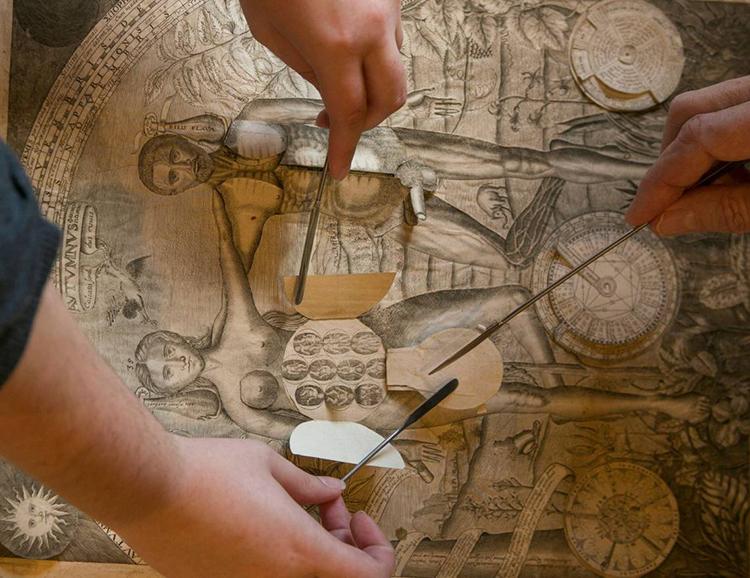

Medical students explore the grisly, sometimes sordid world of anatomical dissection.
Two months into medical school, many of the more than 500 students in the 2018 incoming classes at the Duke School of Medicine have already met their first cadavers.
Human gross anatomy is a rite of passage that usually involves a chilly lab with steel tables. Starched white lab coats. The stench of embalming chemicals. But this day’s lesson involves centuries-old books.
“We’re going to take you back in time to about 500 years ago, when people were starting to do anatomy for the first time,” said Jeffrey Baker, M.D., Ph.D., who teaches history of medicine at Duke. “As we go back in time I’m hoping you’ll come back seeing the present from a different angle.”
Baker and Rachel Ingold, curator of the History of Medicine Collections, usher the roughly 100 students gathered for Duke’s annual “Anatomy Day” into the Gothic Reading Room on the second floor of the Rubenstein Library.
On display are dozens of rare books from the library’s collections that illustrate how ideas about our insides have changed over time, from the works of Galen, a 2nd-century Greek physician, to Leonardo da Vinci to the modern day.
Read entire article at Duke Today